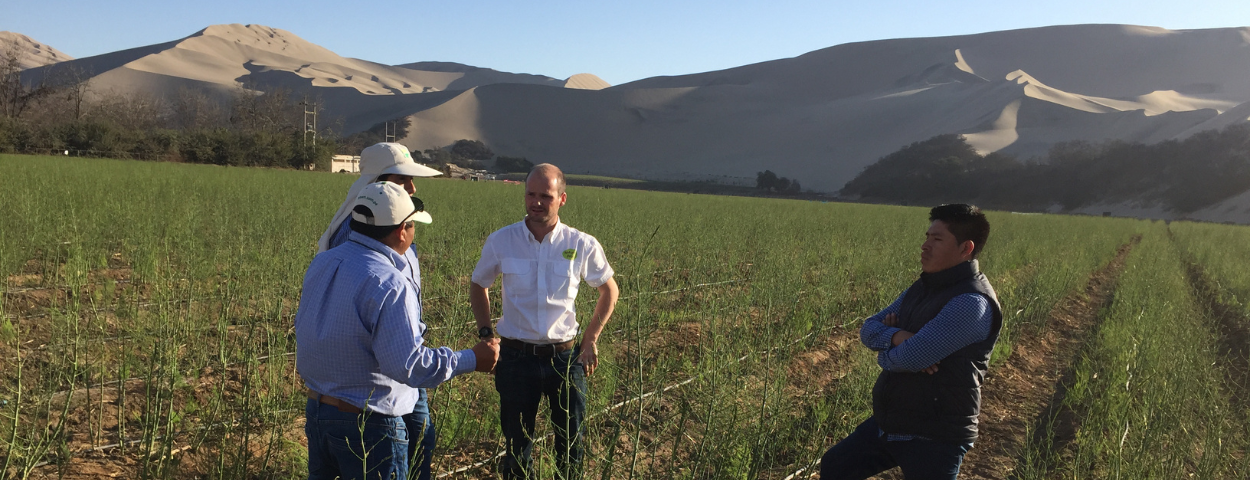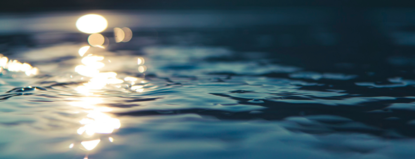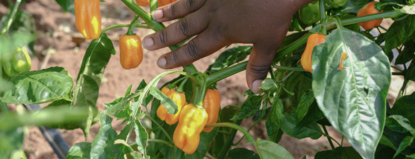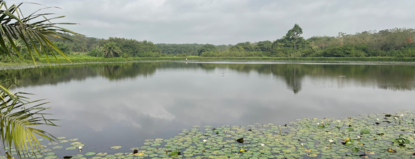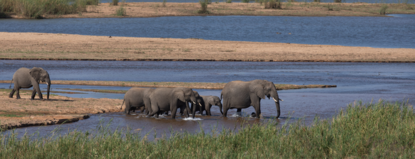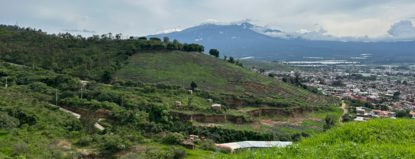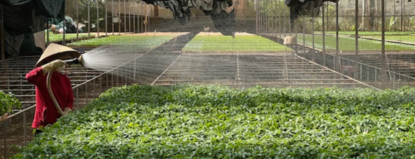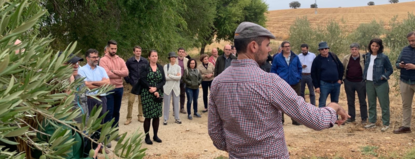Creating an efficient, fair and sustainable value chain is a challenge for many sectors, including the fruits and vegetables sector. For Nature’s Pride and its sister company Berries Pride, responsible water use is of critical strategic importance to their business and the future of the sector. Therefore, they are making it a priority in their work. Coen van Iwaarden, Senior Advisor on Sustainable Business at Nature’s Pride, explores the work of both companies by explaining how they address water challenges in collaboration with their dedicated growers and clients.
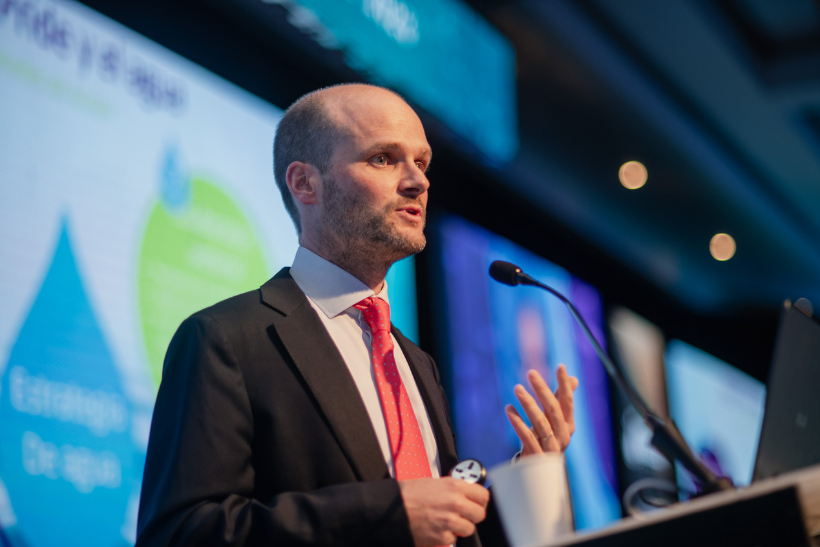
Nature’s Pride and its sister company, Berries Pride, buy fruit and vegetables in Peru and Chile, among other countries. What water-related issues do you see in these areas and how do they affect your company’s operations?
“From a water perspective, we see in general that important regions for the supply of fresh fruits and vegetables to Europe are increasingly out-of-balance. In these areas, more water is being used by all users in a catchment (not only by agriculture) than there is available. This causes water stress. This is not only the case in Peru or Chile, but globally, including in countries like Spain, South Africa, Morocco, Mexico, etc. In other words, this is not a country-specific challenge, but a global trend. Therefore, if retailers and importers wish to have the right volumes and quality of fresh produce in Europe in the future, they need to develop a long term strategy to improve the water resilience of their value chains which focuses on restoring the water balance in key sourcing catchments,” according to Van Iwaarden.
“Buyers in Europe need to understand that where and how much volume they buy, has an impact on the water situation in the producing region.”
How does water stress manifest itself in the fruit and vegetables sector and what can be done about it?
Van Iwaarden: “We see globally that weather patterns are becoming more unreliable. In many regions, it is no longer a given that rain seasons will occur as they used to. In fact, we see more prolonged droughts in some of the key producing areas around the world. Moreover, when it does rain, it often comes with too much volume, leading to floods. After the flood, the water is gone again and often cannot be captured in, for example, reservoirs for later use.”
“To address these challenges, the sector generally requests on-farm water audits,” Van Iwaarden continues. “These audits check legal water use and best practices, which is good, but is insufficient to address the broader challenge of water disbalances in key sourcing catchments around the world. We need to embrace a shared responsibility throughout the entire value chain to support farmers in adapting to climate change and empower them to be a nature-positive steward in their territory. Furthermore, buyers in Europe need to understand that where and how much volume they buy has an impact on the water situation in the producing region.”
In Ica (Peru), in Aconcagua (Chile), and in Doñana (Spain), Nature’s Pride and Berries Pride are driving value chain collaboration focused on responsible water use. Could you explain what this collaboration entails and how it contributes to sustainable water use?
Van Iwaarden: “Yes, of course. Driven by our core focus on care for people and nature, we started with advocacy in our fresh produce sector. Six or seven years ago there was very low awareness of water challenges in key producing regions, their implications, how the European market was linked to this, and how buyers could constructively engage around this topic. With the growers, we are working together on making sure they have the appropriate certifications and measure their water footprint." Van Iwaarden adds, "We are also training them and conducting catchment modeling. In addition, we are engaging with the authorities, environmental NGOs, academia, and look at financial mechanisms to support the required actions."
“The type of actions, the sequence, and timing of collective action for water stewardship is unique for each geography, but generally speaking, we now know the key ingredients to success. For more details on this, I recommend reading the paper ‘Unpacking Collective Action in Water Stewardship’ that was released earlier this year."
Van Iwaarden stresses, “It is important to realize that optimization (‘more crop out of your drop’) isn’t enough to tackle the global water challenge. It’s not only about relative water use, meaning lowering the liter/kg ratio, but especially the total water use in a certain catchment. This means looking at how much water can be sustainably withdrawn while taking into account the environmental flows and human needs in a certain area. Furthermore, contamination of water is also a big challenge across the world. Hence, our sector should also focus on systemic change. We need to transform how the whole value chain -public and private partners- operates in relation to water stress in producing countries, and what role and responsibility each actor can take to contribute to a better overall outcome."
Nature’s Pride and Berries Pride are implementing a “Stewardship at Catchment Level” strategy. Could you elaborate on this strategy?
Van Iwaarden: “It means looking beyond the farm’s gates. An on-farm water audit is a good first step, but it does not address the key challenge, namely a disbalance at catchment level. In order to support rebalancing water use at catchment level in line with water availability, the most important water users in the catchment need to work together. This may seems like a daunting task, but honestly it is the only way to address increasing water stress in our value chains. And the good news is that the ‘water stewardship community’, i.e. those in the public and private sector that collaborate on water, is making great progress."
Van Iwaarden refers back to the recent paper about unpacking collective action and adds, “We know where the key catchments are, we know what a standardized approach of good collective action in water stewardship looks like, and we know there are already many initiatives across the globe under way. So, companies do not need to reinvent the wheel. Often they can join initiatives that have gone through many years of preparatory work already."
“We have ongoing conversations with Partners for Water about water-biodiversity-food nexus and include these elements into our working plans.”
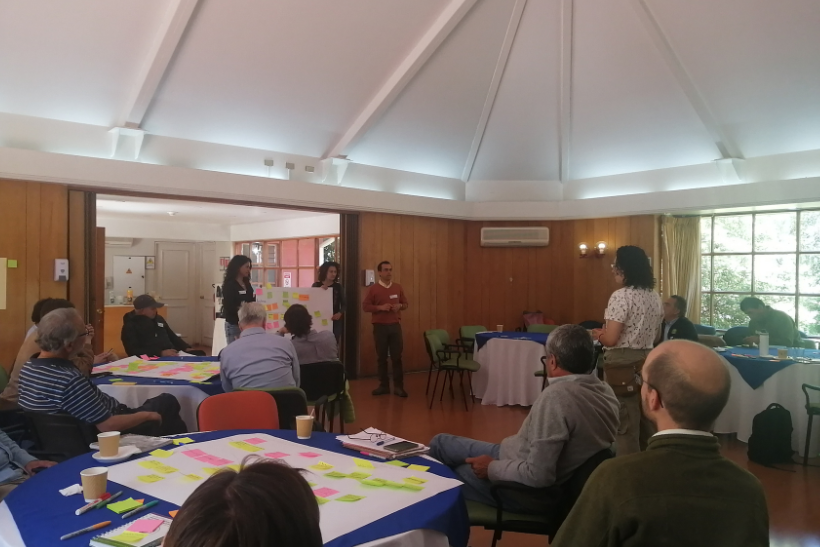
Are there any initiatives of Nature’s Pride looking for synergies within the Water-Food-Biodiversity Nexus?
Van Iwaarden: “We are very fortunate to have an excellent partnership with the Partners for Water Program of the Dutch Government, that already stretches back several years. We have ongoing conversations with them about water-biodiversity-food nexus and include these elements into our working plans. In this work, we receive valuable support from staff of Netherlands’ embassies, for example in Peru, Chile, and Spain. They help us with contacting the authorities and sharing crucial local knowledge.”
Van Iwaarden continues, “At a company level, biodiversity is now an official focus area of our 2028 Plan: Our care for People & Nature. Last year, as part of this plan, we were the first to pilot the GLOBALG.A.P. biodiversity module outside of Europe with several growers in South-Africa. This module is a farm-level audit that helps growers demonstrate their biodiversity management practices to retailers and other buyers."
What key lessons have you learned in your efforts towards responsible water management, and overall more sustainable value chains?
Van Iwaarden: “Hmm...there are so many lessons to share. I’ll pick one. Developing value chain water stewardship takes time and perseverance. You know what they say: ‘if you want to go fast, go alone, if you want to go far, go together’. I’ve learned over the years that great progress is possible as long as one is perseverant and always comes to the table in good faith, with a genuine desire to contribute to better water management in an area to benefit all stakeholders."
Van Iwaarden concludes by adding, “In the end, our interests in the value chain are aligned: we all want a healthy and stable living environment. Our task now is to come closer together, join forces, and make the difference together."
Background
- Since 2001, Nature's Pride believes that enjoying the tastiest fruit and vegetables today can contribute to a better world tomorrow. Its goal is to make the food chain more efficient, fair and sustainable. Through close cooperation, chain optimization and knowledge exchange with dedicated growers, retailers, wholesalers and public parties, Nature’s Pride raises the bar in the sector in the field of sustainability.
- Nature's Pride has 400 growers in 53 countries across almost every continent and sells 220 different products -from avocados to okra- to more than 360 customers in 27 countries.
- In 2019, Nature’s Pride was the first in the fruit and vegetables sector with water audits. That same year it laid the foundation for collective action on responsible water use in the sector with the launch of collective action in Ica, Peru, and subsequently Aconcagua, in Chile.
- In 2023, Nature’s Pride shared its learnings and called for collaborative action at the United Nations Water Conference in New York.
- In 2024, Nature’s Pride was the first to pilot GLOBALG.A.P.’s new Biodiversity module outside of Europe. This module is a farm-level audit that helps growers demonstrate their biodiversity management practices to retailers and other buyers.
